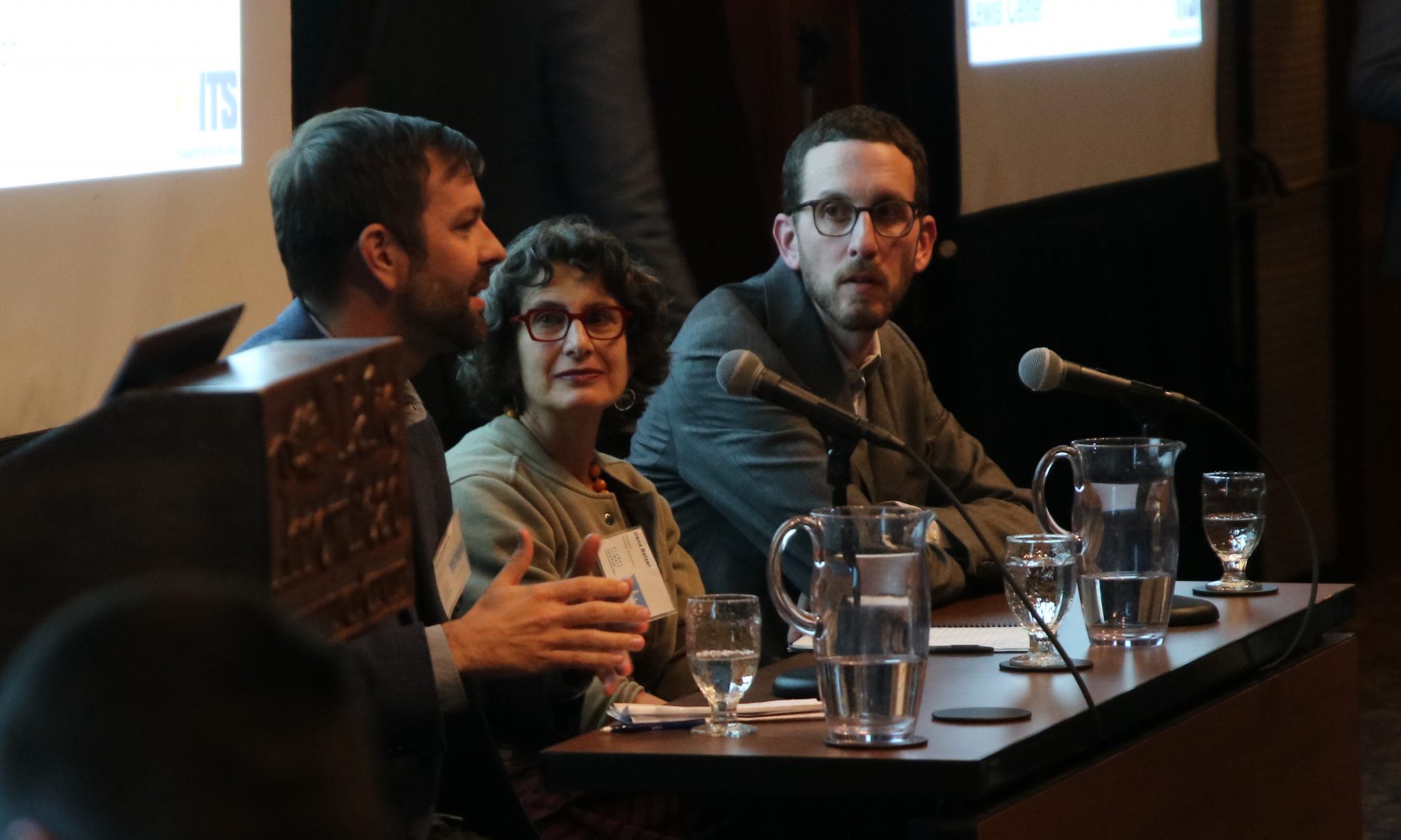By Eve Bachrach
The 27th Annual UCLA Lake Arrowhead Symposium – “Global Climate Change, Local Growing Pains” – tackled the connections and conflicts between sustainability goals and land use policy in California and beyond. Here’s a dispatch from the opening night session and a summary video with the three panelists.
California is not building enough housing, and the denser, more walkable, more environmentally friendly neighborhoods that are being built are not affordable. In a nuanced and often provocative session, moderated by Pepperdine University’s Dr. Greg Morrow and featuring presentations from UCLA Luskin School of Public Affairs associate professor Dr. Paavo Monkkonen, California State Senator Scott Wiener, and Dena Belzer of Strategic Economics, three explanations for this crisis emerged: California cities’ reliance on single-family zoning, the limited conception of what constitutes “neighborhood change,” and a lack of communication from planners, politicians, and advocates.
Dr. Monkkonen began by explaining that the origins of single-family zoning are exclusionary – and that the practice remains so today. In Los Angeles, multifamily housing is illegal in the three-quarters of the city where land is zoned for single-family houses. New, dense housing, then, is usually built on the periphery where it is poorly served by transit, services, and access to jobs, and requires longer commutes that create more greenhouse gas emissions. For example, if the areas around new Metro Expo Line stations could be “upzoned” to allow denser development, more people could commute by transit and benefit from the public’s billion-dollar infrastructure investment. Instead, local opponents stopped upzoning with fears of “neighborhood change,” without grappling with the idea that enormous increases in home prices and emissions are their own forms of negative change.
Next, Sen. Wiener declared that California has had a “housing last” approach for far too long – but that widespread support for the bevy of housing bills recently signed by Gov. Jerry Brown is a sign that may be changing. There remains a disconnect for many people who support pro-housing policies in the abstract but oppose them in their own neighborhoods, and the senator encouraged advocates to focus on the stories of people suffering because of the housing crisis to help others understand the consequences of their opposition. He recognized that support for policies that won’t make a meaningful impact for another 10 or 15 years can be a tough sell, but changes such as reforming RHNA and altering the mechanics of local control, to set state parameters over the obligation of localities to meet housing construction goals, could stem the tide of the housing crisis.
Ms. Belzer unpacked the idea of displacement, explaining that it means more than neighborhood change, which can happen with or without new development. Areas vulnerable to displacement are not necessarily those ripe for investment, and displacement often happens without gentrification. Instead, most residents in Los Angeles are displaced from neighborhoods with “naturally-occurring affordable housing.” New, dense development is limited to these areas where zoning and financing allows it, leading to very large, mostly unaffordable developments being built in a small number of locations rather than the small or midsize housing that tends to be more affordable. Opening up more neighborhoods to development would allow smaller buildings to be scattered across the city in a way that would feel more organic, and more familiar, to neighbors wary of change.
